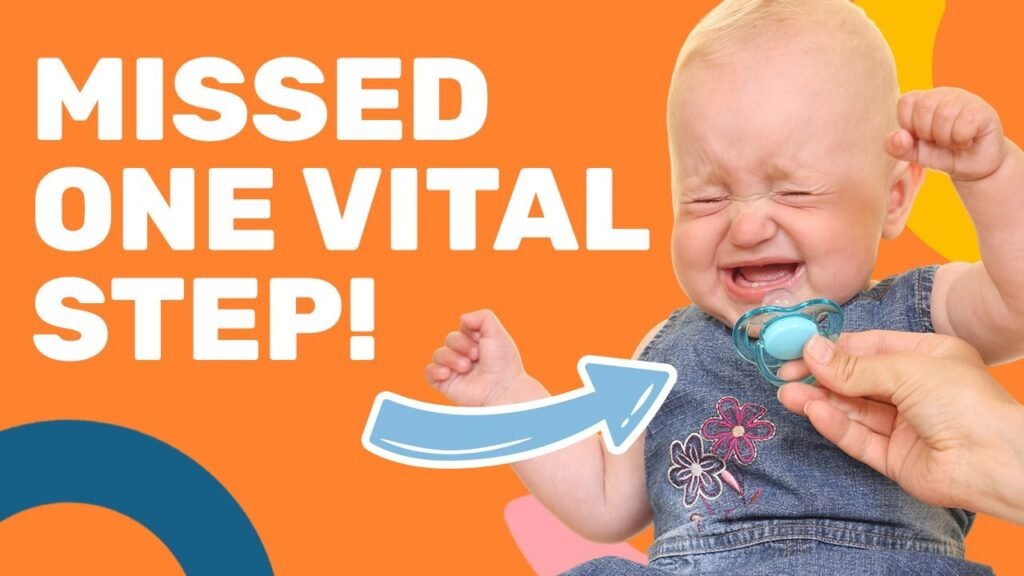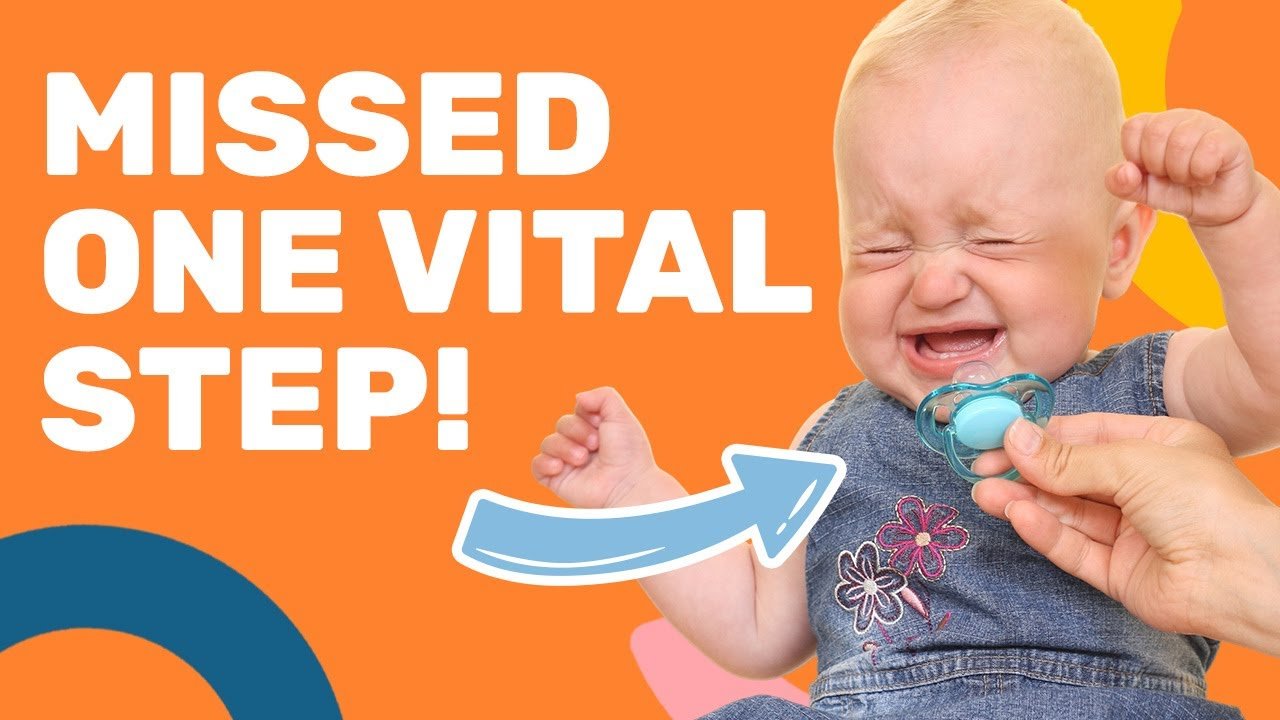Are you struggling to get rid of your toddler’s pacifier? Don’t worry, you’re not alone! The pacifier can become a comfort object that children become attached to, making it difficult to wean them off. But fear not, because in this video, Emma Hubbard shares her proven 5-step pacifier weaning system. She discusses the importance of gradually reducing pacifier use throughout the day and restricting it to naps and bedtime. Furthermore, she emphasizes the need to teach alternative coping strategies to toddlers, such as labeling emotions and offering comfort. Emma also provides helpful tips on involving the child in the process and swapping pacifiers for a gift. So, if you’re ready to say goodbye to the pacifier and improve your toddler’s sleep and behavior, be sure to watch this informative video by Emma Hubbard.
Getting rid of a pacifier doesn’t have to be a traumatic experience for you and your toddler. In this video, Emma Hubbard introduces her 5-step pacifier weaning system, which offers a gradual and gentle approach to removing the pacifier for good. Emma highlights the importance of reducing pacifier use throughout the day and gradually restricting it to only naps and bedtime. She also emphasizes the need to teach alternative coping strategies to toddlers, such as labeling emotions and providing comfort. In addition, Emma shares useful tips on involving the child in the process and swapping pacifiers for a gift. So if you’re ready to help your toddler say goodbye to the pacifier and improve their sleep and behavior, this video is a must-watch.
I. Introduction
Getting rid of a pacifier can be a challenging task for both parents and toddlers. Pacifiers provide comfort and serve as a soothing tool for children, but prolonged use can lead to attachment and difficulties when trying to remove them. That’s why it’s important to have a strategy in place to gradually wean your child off the pacifier. In this article, we will discuss a comprehensive 5-step pacifier weaning system that will help you ditch the pacifier for good. This system takes a gentle and gradual approach, ensuring a smoother transition for both you and your toddler.
II. The 5 Step Pacifier Weaning System
A. Gradual and gentle approach
The first step in the pacifier weaning system is to take a gradual and gentle approach. Abruptly taking away the pacifier can be traumatic for your child and may result in other sleep disruptions. Instead, start by reducing pacifier use throughout the day and gradually limit it to naps and bedtime.
B. Reducing pacifier use throughout the day
To reduce pacifier use throughout the day, you can establish pacifier-free times during low-stress periods. For example, you can remove the pacifier when your toddler is happily playing at home but continue to offer it during car rides and naps. Slowly extend the pacifier-free time to include car trips and outside play. This gradual approach helps your child adjust to not having the pacifier consistently.
C. Restricting pacifier to naps and bedtime
Once your child is comfortable with reduced pacifier use throughout the day, it’s time to restrict the pacifier to naps and bedtime only. This may be a challenging transition, as your child won’t have the pacifier readily available to soothe themselves during the day. This is where teaching alternative coping strategies becomes crucial.
D. Teaching alternative coping strategies
Since your child won’t have the pacifier to rely on for soothing, it’s essential to teach them alternative coping strategies. This can include labeling their emotions, offering comfort and cuddles, deep breathing exercises, or providing a toy to cuddle for comfort. By teaching these alternative strategies, you are helping your child develop new ways to cope with their emotions without relying on the pacifier.

E. Choosing a calm and regular routine
Choosing the right time to get rid of the pacifier is crucial for a smoother transition. Avoid removing the pacifier during stressful periods, such as potty training or when there are significant changes happening in your toddler’s life. Instead, choose a date when your household is calm and in a regular routine. This will increase your chances of success and make the transition easier for your toddler.
III. Involving the Child in the Process
A. Swapping pacifiers for a gift
Involving your child in the process of getting rid of the pacifier can make the experience more positive and motivating for them. For children aged three and over, you can let them choose a special date to ditch the pacifier and involve them in discussions about where they want the pacifiers to go. To make the process even more exciting, consider swapping the pacifiers for a gift. This can provide your child with additional motivation and make saying goodbye to the pacifier feel like a positive experience.
B. Saying goodbye to pacifiers
On the chosen date, collect all the pacifiers in the house after your child’s midday nap or at bedtime. If your child is under three years of age, simply inform them that it’s the day to say goodbye to the pacifiers. For children aged three and over, wrap the pacifiers in a box and explain that they will be given to Santa Claus to make new toys for other children. Saying goodbye to the pacifiers in a meaningful way can help your child understand and accept the transition.
IV. The Challenging Transition Period
A. The first few nights without the pacifier
The first few nights without the pacifier may be challenging for your child. They have to learn how to fall asleep without the pacifier, which can be difficult initially. During this period, it’s important to be empathetic and prepared to provide extra comfort during naps and bedtime. However, it’s crucial not to give in to the temptation of giving the pacifier back. Giving in will only reinforce the behavior, making it harder to get rid of the pacifier in the long run.
B. Providing extra comfort
During the transition period, provide your child with extra comfort and reassurance. Offer cuddles, soothing words, and create a calm and comforting bedtime routine. Be patient and understanding as your child adjusts to falling asleep without the pacifier. Providing this extra comfort will help ease the transition and promote better sleep.
C. Not giving in to the pacifier
As mentioned before, it’s important not to give in to the pacifier during the transition period. Your child may cry or protest, but giving them the pacifier will only prolong the weaning process. Stay firm and consistent in your decision to remove the pacifier. It may be challenging in the beginning, but sticking to your plan will yield better results in the long run.
V. Improved Sleep and Behavior
A. Toddler’s sleep improvements
Removing the pacifier can lead to improved sleep for your toddler. Although the initial transition period may be challenging, most children adapt within a week. Without the reliance on the pacifier, your child will learn to fall asleep independently and self-soothe. This newfound skill will contribute to more consistent and restful sleep.
B. Toddler’s behavior improvements
In addition to improved sleep, removing the pacifier can also lead to improvements in your toddler’s behavior. With alternative coping strategies in place, your child will develop healthier ways to manage their emotions. They’ll learn to verbalize their feelings, seek comfort from loved ones, and develop a greater sense of self-regulation. This can result in fewer tantrums and meltdowns as they learn healthier ways to cope with frustration and stress.
VI. Conclusion
Getting rid of the pacifier doesn’t have to be a traumatic experience for you and your toddler. By following the 5-step pacifier weaning system, you can gradually and gently transition your child away from the pacifier. Remember to involve your child in the process, teach alternative coping strategies, and provide extra comfort during the transition period. With time and patience, your child’s sleep and behavior will improve, ultimately leading to a pacifier-free and happier household.

